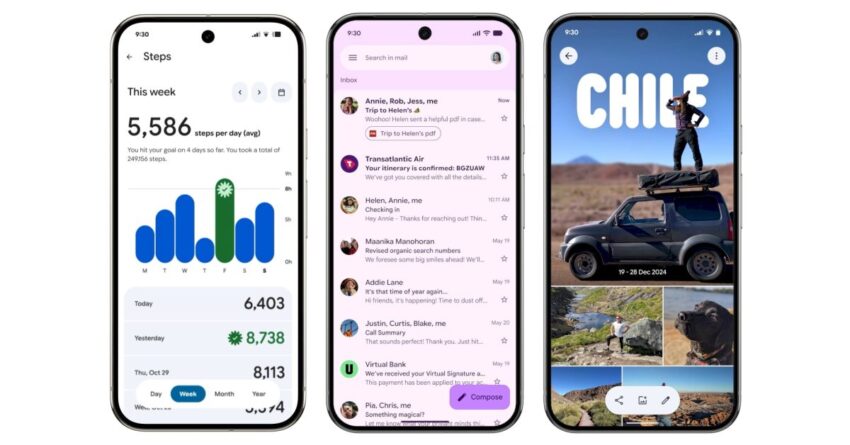
what google material 3 expressive redesigns are Google is enhancing its user interface with the rollout of the Material 3 Expressive redesign, which began following its announcement in May.
what google material 3 expressive redesigns are
Introduction to Material 3 Expressive
In May 2025, Google unveiled its new design language, known as Material 3 Expressive. This redesign aims to provide a more personalized and visually appealing experience across its suite of applications and devices. The introduction of this design language marks a significant evolution from its predecessor, Material Design, which has been a cornerstone of Google’s visual identity for several years.
The Material 3 Expressive redesign focuses on creating a more engaging and dynamic user experience. It emphasizes adaptability, allowing apps to respond to user preferences and environmental contexts. This approach not only enhances aesthetics but also improves functionality, making it easier for users to navigate and interact with their devices.
Key Features of Material 3 Expressive
The Material 3 Expressive redesign introduces several key features that set it apart from previous iterations. These features include:
- Dynamic Color: One of the standout features of Material 3 is its dynamic color system, which allows applications to adapt their color schemes based on user preferences and the surrounding environment. This feature enhances personalization, making each user’s experience unique.
- Enhanced Typography: The redesign places a greater emphasis on typography, offering a wider range of font styles and sizes. This change aims to improve readability and create a more visually appealing interface.
- Improved Component Design: Material 3 introduces new components and updates existing ones, ensuring that they are not only functional but also aesthetically pleasing. This includes buttons, cards, and other UI elements that are more intuitive and engaging.
- Accessibility Features: Google has prioritized accessibility in the Material 3 Expressive redesign, ensuring that all users, including those with disabilities, can navigate and interact with applications seamlessly.
Rollout Timeline and Availability
The rollout of Material 3 Expressive has been gradual, with various Google apps receiving updates since the initial announcement. The launch of the Pixel 10 and Android 16 QPR1 served as a significant catalyst for this rollout, providing users with the first tangible experiences of the new design language.
Initial Rollout
Following the announcement in May, Google began implementing the Material 3 Expressive redesign across its suite of applications, including:
- Google Photos: The app received a refreshed interface that utilizes dynamic color and improved typography, enhancing the overall user experience.
- Google Maps: Updates to Google Maps include new visual elements that make navigation more intuitive and visually appealing.
- Gmail: The Gmail interface has been updated to align with the Material 3 design principles, offering a cleaner and more organized layout.
Future Updates
While many Google apps have already adopted the Material 3 Expressive redesign, several updates are still on the horizon. Google has indicated that additional features and enhancements will be rolled out in the coming months, including:
- Google Drive: Users can expect a redesigned interface that aligns with the new design language, making file management more intuitive.
- Google Calendar: Upcoming updates will introduce a refreshed look and feel, incorporating dynamic color and improved component design.
- Android System UI: The overall Android experience will be enhanced with Material 3 principles, ensuring a cohesive look across all devices.
Implications for Users and Developers
The rollout of Material 3 Expressive has significant implications for both users and developers. For users, the enhanced personalization and improved usability promise a more engaging experience across Google’s ecosystem. The dynamic color feature, in particular, allows for a more tailored interface that can adapt to individual preferences and moods.
For developers, the transition to Material 3 Expressive presents both opportunities and challenges. Developers will need to familiarize themselves with the new design principles and guidelines to ensure that their applications align with the updated aesthetic. This may involve redesigning existing apps or creating new ones that fully leverage the capabilities of Material 3.
Stakeholder Reactions
The response to the Material 3 Expressive redesign has been largely positive among stakeholders. Users have expressed enthusiasm for the new features, particularly the dynamic color system, which has been praised for its ability to create a more personalized experience. Developers, on the other hand, have acknowledged the challenges of adapting to the new design language but also see it as an opportunity to innovate and enhance their applications.
Comparative Analysis with Previous Design Languages
To fully appreciate the significance of Material 3 Expressive, it is essential to compare it with its predecessors. Material Design, introduced in 2014, focused on creating a unified visual language across Google’s products. While it was successful in establishing a cohesive aesthetic, it lacked the flexibility and personalization that users increasingly demand.
Material 3 Expressive addresses these shortcomings by introducing a more dynamic and adaptable design language. The emphasis on personalization, accessibility, and improved typography sets it apart from previous iterations, making it more relevant in today’s fast-paced digital landscape.
Conclusion
The rollout of Material 3 Expressive represents a significant step forward for Google’s design philosophy. By prioritizing personalization, accessibility, and improved usability, Google is not only enhancing the user experience but also setting a new standard for design in the tech industry. As the rollout continues, users can expect a more engaging and visually appealing experience across Google’s suite of applications, while developers will have the opportunity to innovate and create applications that align with this new design language.
As we look ahead, it will be interesting to see how Material 3 Expressive evolves and influences the broader tech landscape. With its focus on adaptability and user-centric design, it has the potential to reshape how applications are developed and experienced in the future.
Source: Original report
Was this helpful?
Last Modified: October 13, 2025 at 4:36 am
1 views














